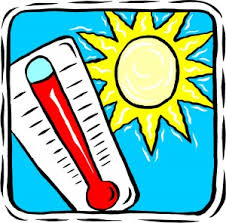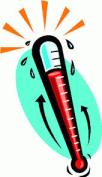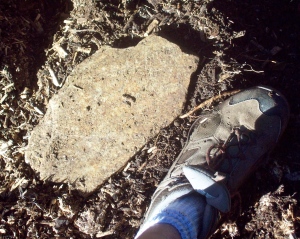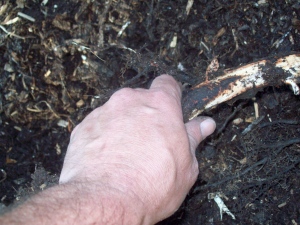Playground safety tips to beat summer time heat induced injuries
July 19, 2013 Leave a comment
 Kid’s Health reports that our bodies are cooled through the process of sweating and radiating heat thorough our skin. Unfavorable conditions in the summer months such as high temperatures, high humidity and hearty exercise can cause heat related illnesses. There are three injuries that occur when our bodies get too hot in the summer; they include heat cramps, heat exhaustion and heatstroke.
Kid’s Health reports that our bodies are cooled through the process of sweating and radiating heat thorough our skin. Unfavorable conditions in the summer months such as high temperatures, high humidity and hearty exercise can cause heat related illnesses. There are three injuries that occur when our bodies get too hot in the summer; they include heat cramps, heat exhaustion and heatstroke.
The Mayo Clinic’s website reports these three conditions build on each other to the eventual result of heatstroke. Recognizing the early stages of heat-induced illness can help you avoid a medical emergency.
Stage 1)
Heat cramps: “…painful, involuntary muscle spasms that usually occur during heavy exercise in hot environments. The spasms may be more intense and more prolonged than are typical nighttime leg cramps. Inadequate fluid intake often contributes to heat cramps”.
Kids Health’s website reports that children are especially prone to heat cramps when they haven’t been consuming enough fluids. As we loose salts and fluids we become susceptible to heat cramps because of the low levels of salts causes our muscles to cramp.
They go on to say that heat cramps are painful but are not serious. Kids Health also reports the remedy for heat cramps is to assist the affected person to a cool place to rest where they can increase their fluid intake. They also suggest massaging cramped muscles to alleviate the pain associated with the cramping.
Stage 2)
Heat exhaustion: “…is a condition whose symptoms may include heavy sweating and a rapid pulse, a result of your body overheating”. Kids Health reports this happens when someone has suffered heat cramps and does not get out of the heat to a cool location and who does not consume enough fluids. They also report that the following symptoms are signs of heat exhaustion. “Dehydration, fatigue, weakness, clammy skin, headache, nausea and/or vomiting, hyperventilation (rapid breathing) (and) irritability.”
Kids Health’s website lists first aid for heat exhaustion in the following steps. “Bring your children indoors or into the shade. Loosen or remove the child’s clothing. Encourage your child to eat and drink. Give your child a bath in cool (not cold) water. Call your doctor for further advice If your child is too exhausted or ill to eat or drink. At this point, intravenous (IV) fluids may be necessary.
Stage 3)
Heatstroke: “…is caused by prolonged exposure to high temperatures or by doing physical activity in hot weather. You are considered to have heatstroke when your body reaches 104 F (40 C) or higher”. They go on to say “High humidity, certain health problems and some medications increase your risk of heatstroke. So does being a young child or older adult.” Kids Health reports major factors in heat stroke in children are over dressing and extreme physical exertion during the summer months. They go on to say that if left unattended, heatstroke can become fatal.
Kids Health warns that heatstroke can happen if a child is left in or becomes trapped in a motor vehicle on a hot day. The internal temperature of your car can reach 125 degrees in 20 minutes. This would rapidly raise the body temperature of any child inside.
Kids Health says to call for emergency medical help if your child shows one or more of the following symptoms of heatstroke: flushed, hot, dry skin with no sweating; temperature of 105° F (40.6° C) or higher; severe, throbbing headache; weakness, dizziness, or confusion; sluggishness or fatigue; seizure; decreased responsiveness and loss of consciousness.
Kids Health says while you are waiting for emergency medical personnel to arrive you should do the following: get your child indoors or into the shade, undress your child and sponge or douse them with cool water and DO NOT give them fluids.
 Preventing heat related illnesses
Preventing heat related illnesses
Kids Health reports that we should teach children to hydrate often when it is hot outside. They report to encourage children to drink fluids even if they are not thirsty. They also suggest dressing children in light colored and loose clothing when temperatures soar. It is best to have children participate in vigorous outdoor activities before noon and after 6:00 P.M. to avoid the heat of the day. Train children to immediately come indoors and out of the heat if they feel overheated.
Here at U.S. PlayZone, Inc, we believe in preventative medicine. Preventing a medical emergency is a lot easier than living through one. We hope all of our customers have a safe and fun summer season. We hope to see ya on the playground.



 I told her that
I told her that 



